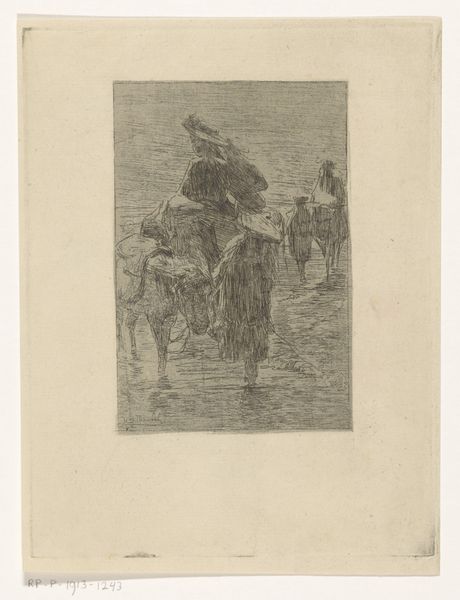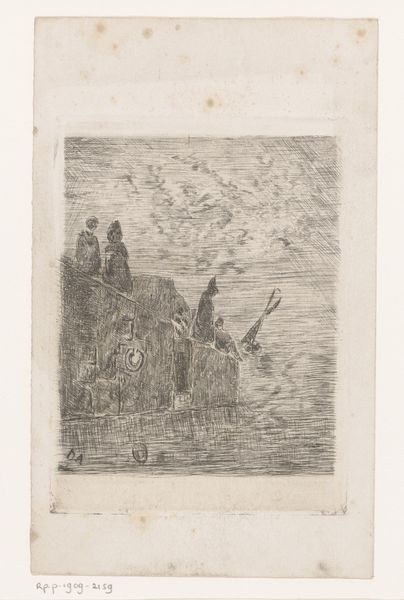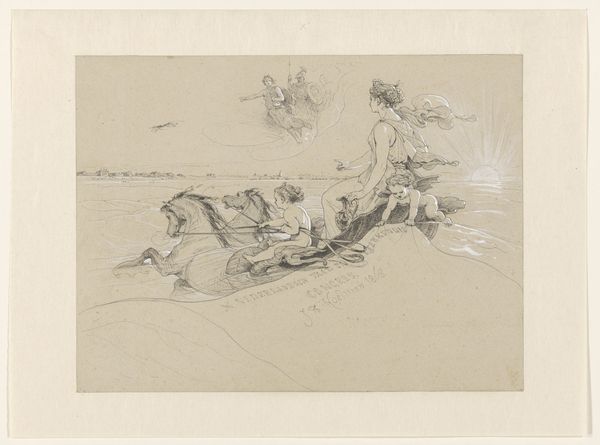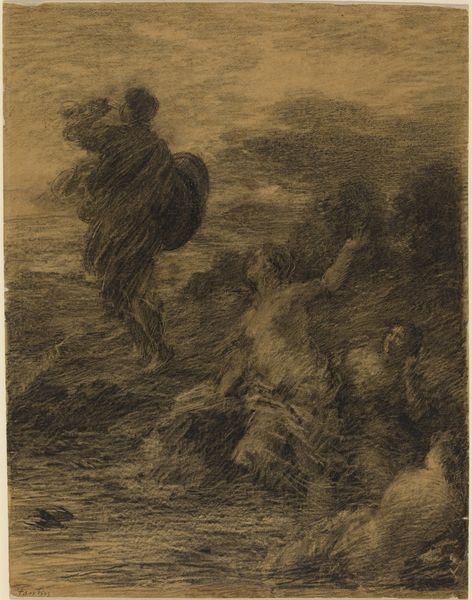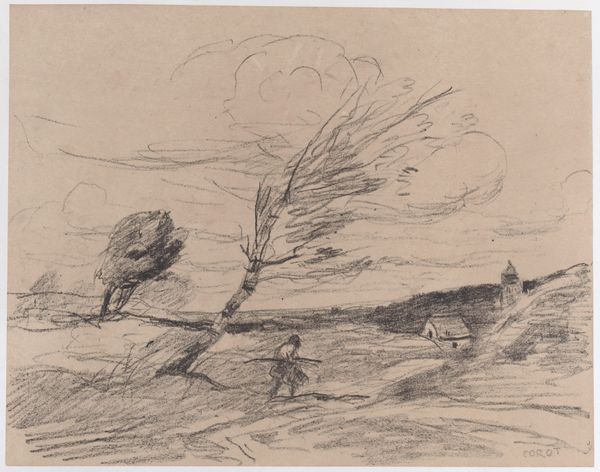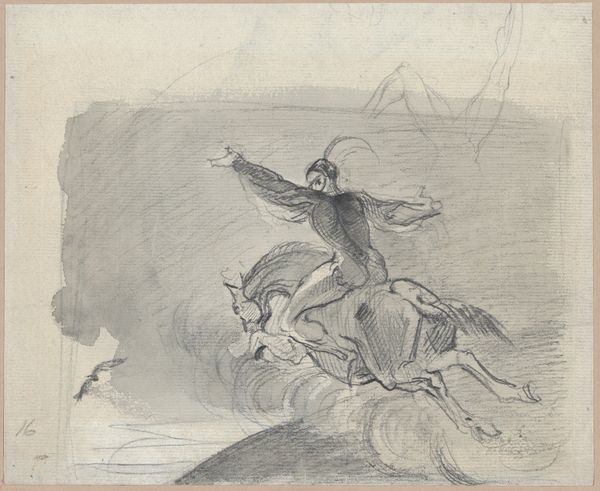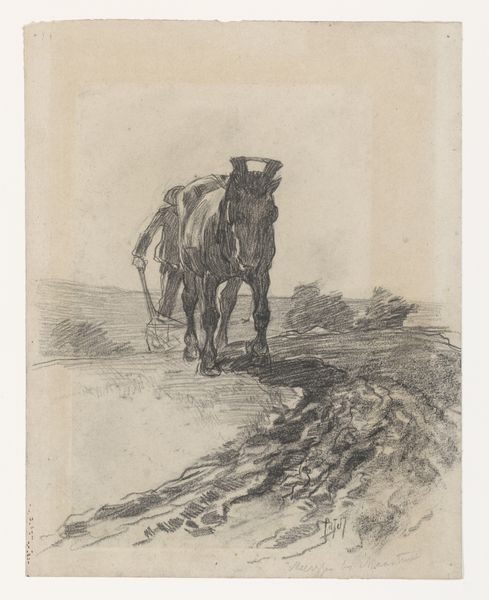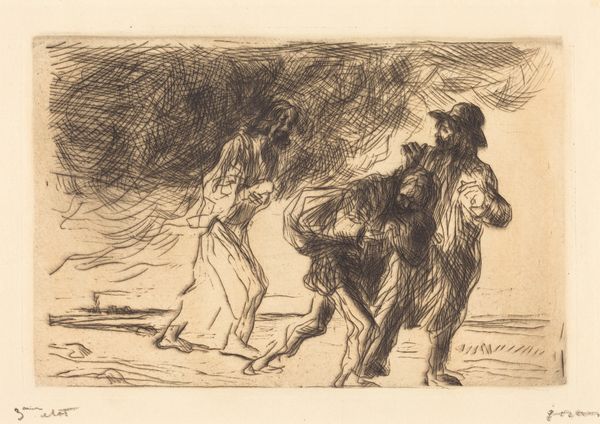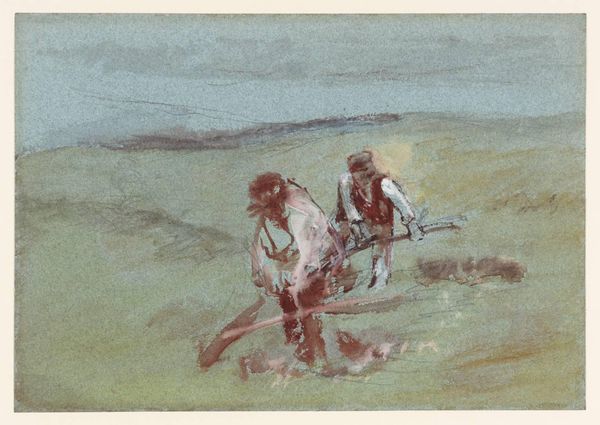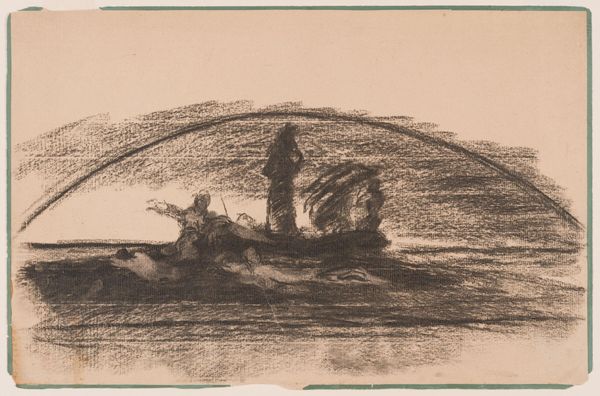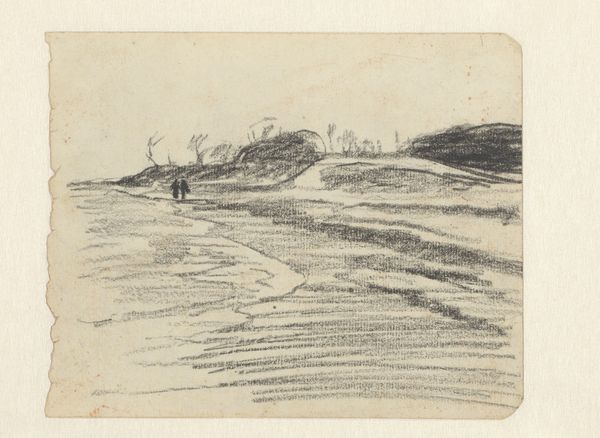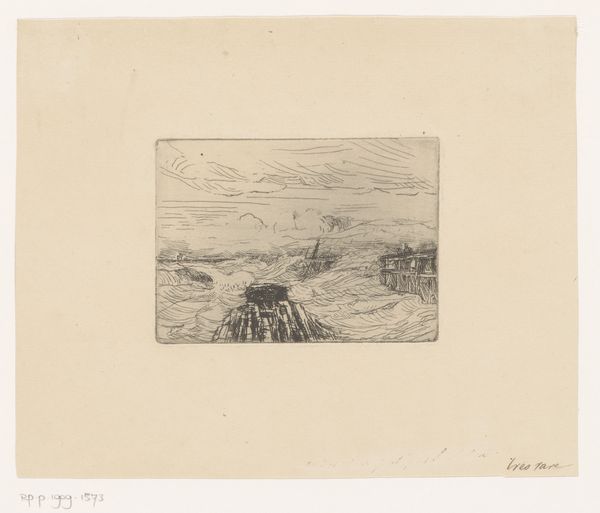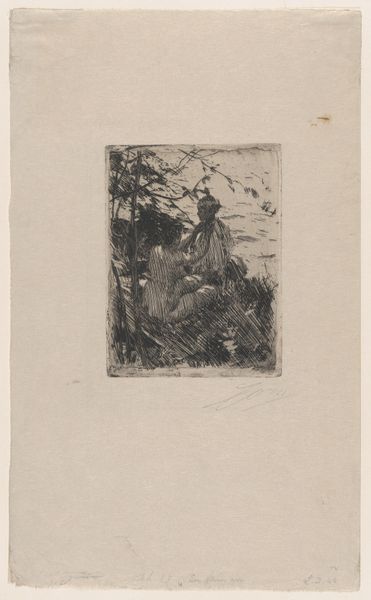
Dimensions: 193 mm (width) x 210 mm (height) (bladmaal)
Curator: Welcome. We’re looking at "Stejlende hest over hav eller skyer," or "Rearing Horse Over Sea or Clouds," by Oluf Hartmann. It's a pencil and graphite drawing estimated to have been created between 1879 and 1910. Editor: Immediately, I'm struck by its somber tone. The monochromatic palette evokes a sense of brooding Romanticism. The rough textures produced by the pencil work contribute to the raw, unsettled feeling. Curator: Yes, the texture is quite prominent. The composition is built through clear, deliberate strokes; notice how Hartmann uses varying degrees of pressure to achieve tonal contrast and give the rearing horse form. How might this rendering underscore a commentary on materials? Editor: Looking at it through a materialist lens, the visible graphite strokes tell us much. They showcase the artist's hand—the direct labor involved. It also forces one to contemplate availability of materials. Hartmann chose a very rudimentary means for creating an image when color pigments were available, though more costly. Curator: Consider too, the composition. Hartmann employs a high horizon line, emphasizing the vastness of the depicted sea or clouds. This emphasizes the dynamism within the relatively small picture plane. It’s meant to elicit powerful emotional reaction in the viewer. The rearing posture suggests a romantic ideal of power and untamed spirit. Editor: And the depiction of the horse, quite blurry to the modern eye, but perhaps representing artistic skill and vision from an earlier era. Even if pencil was a common tool, could the paper have been something rare or precious? What labor or skill would be necessary to preserve its materials over long periods? Curator: It raises questions of conservation and value as well. Its value is created by social constructs like artistic canon. Though, from a formal perspective, one can trace formal elements back to masters like Delacroix and Gericault. Editor: Right. We're also dealing with the Romantic style which values individuality and creative freedom, so considering the materials that gave artists the most accessibility and agency is equally vital. Curator: Precisely, those combined insights deepen the impact, leading me back to how much a traditional art history framework has informed our perspectives about the art on view here at the SMK. Editor: And it all leads us back to materiality! Fascinating to think about how this seemingly simple graphite drawing continues to offer rich complexities, doesn't it?
Comments
No comments
Be the first to comment and join the conversation on the ultimate creative platform.
